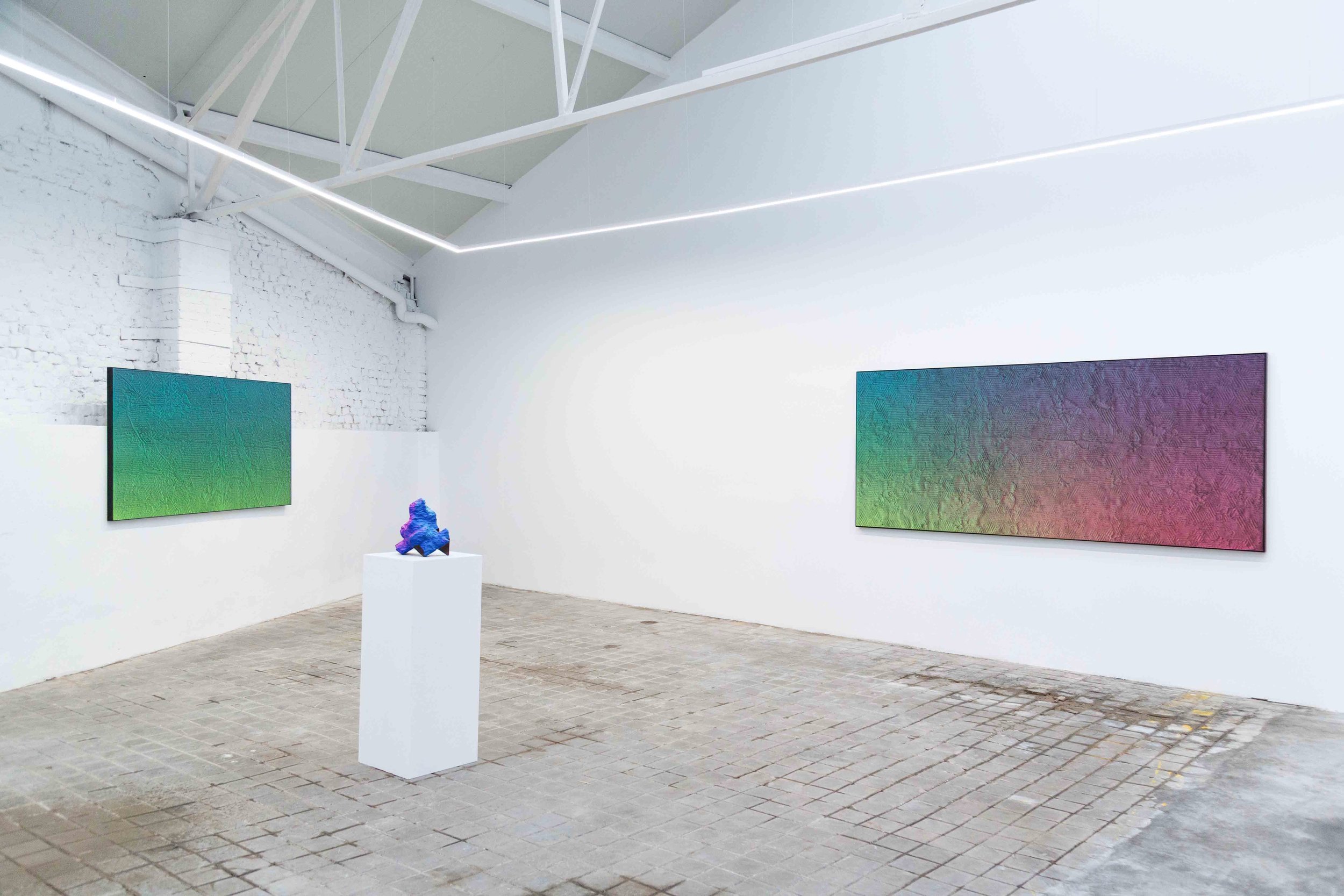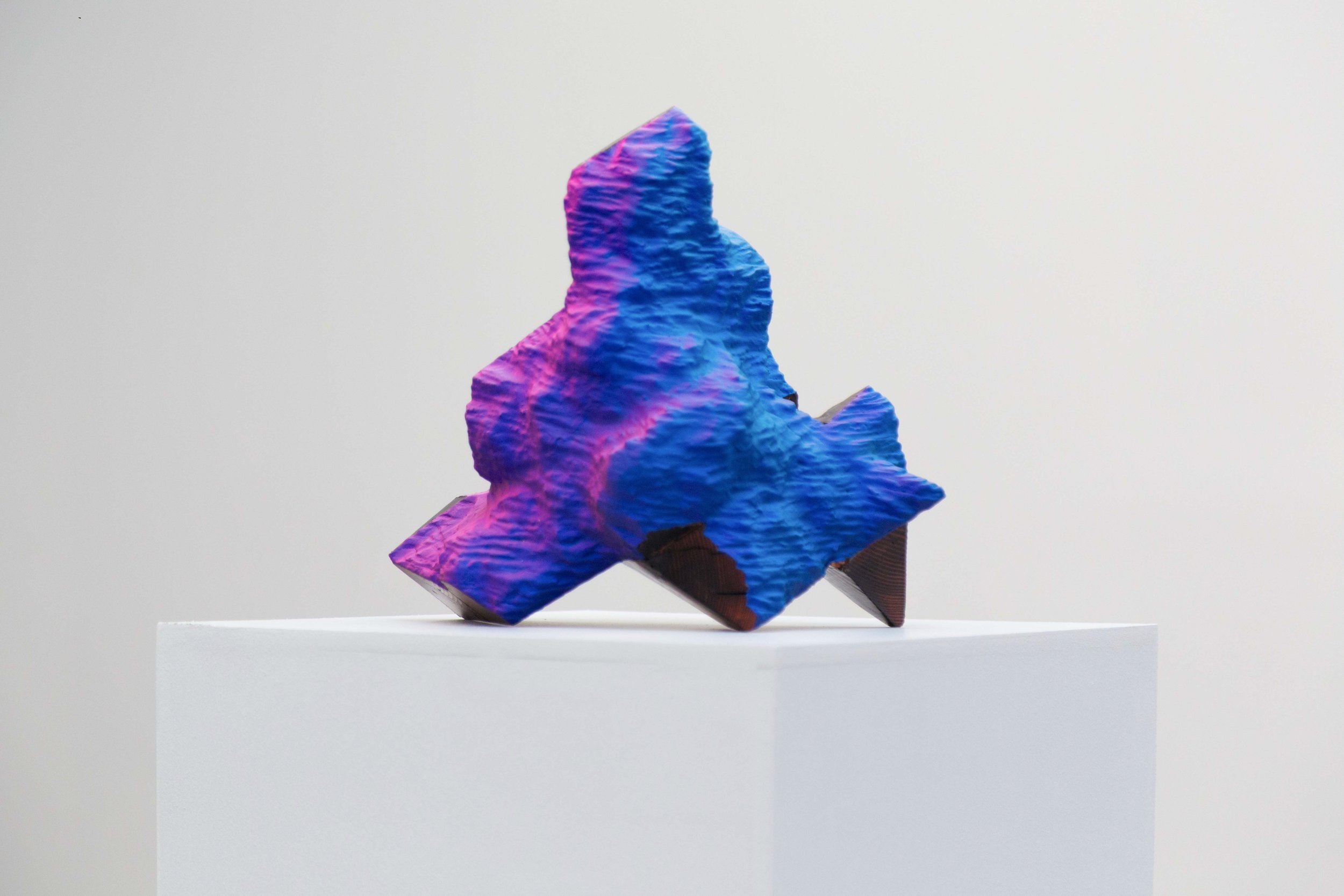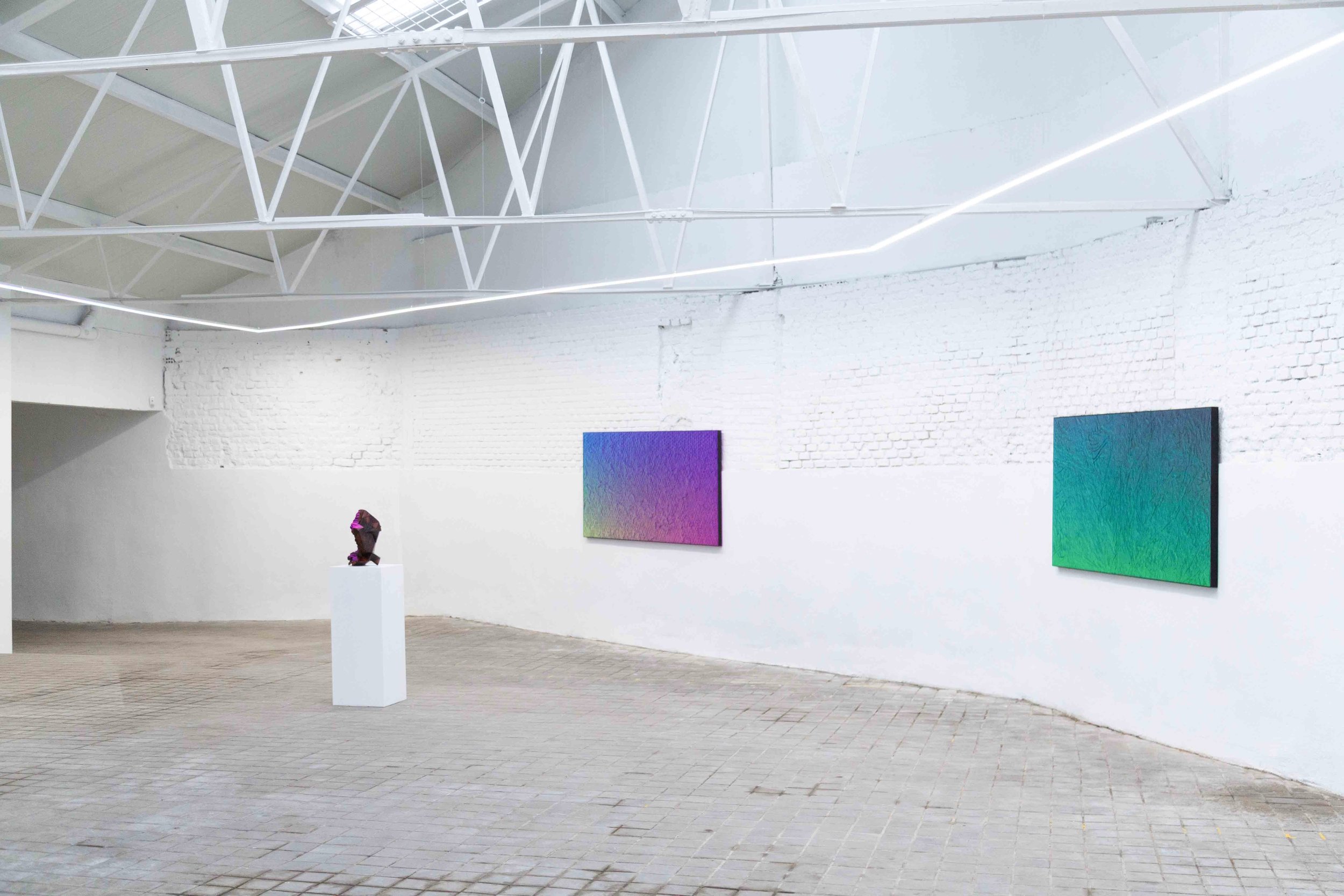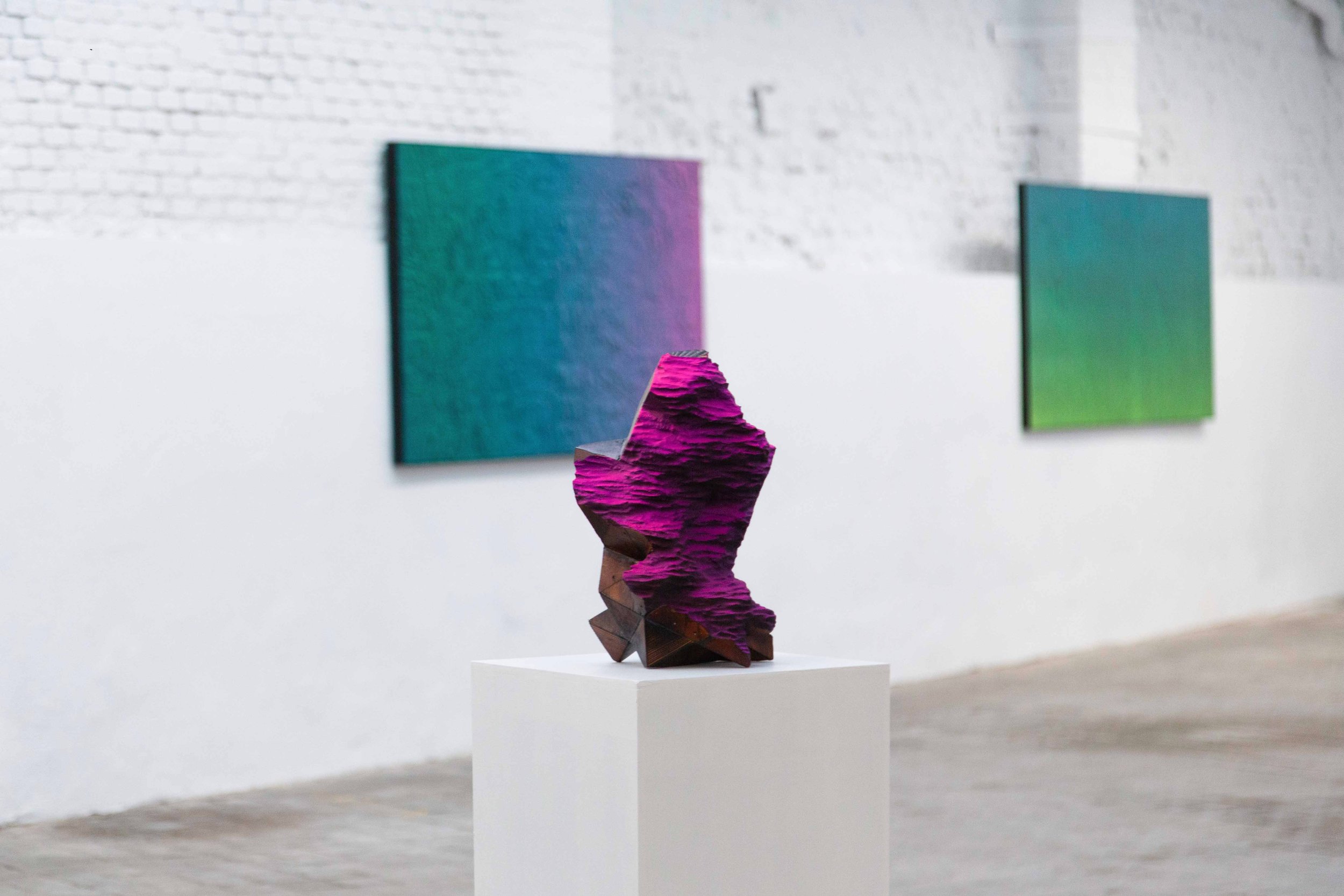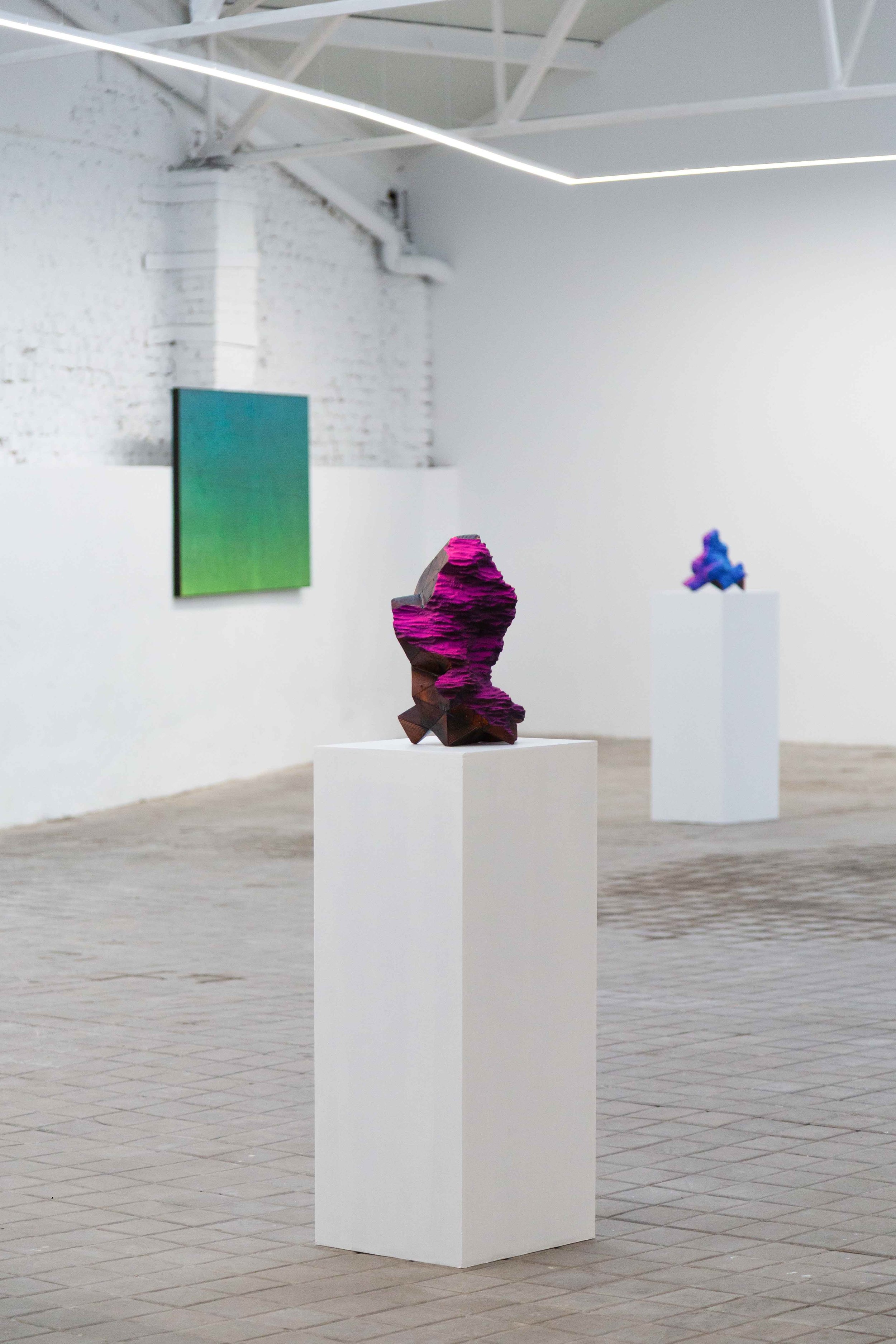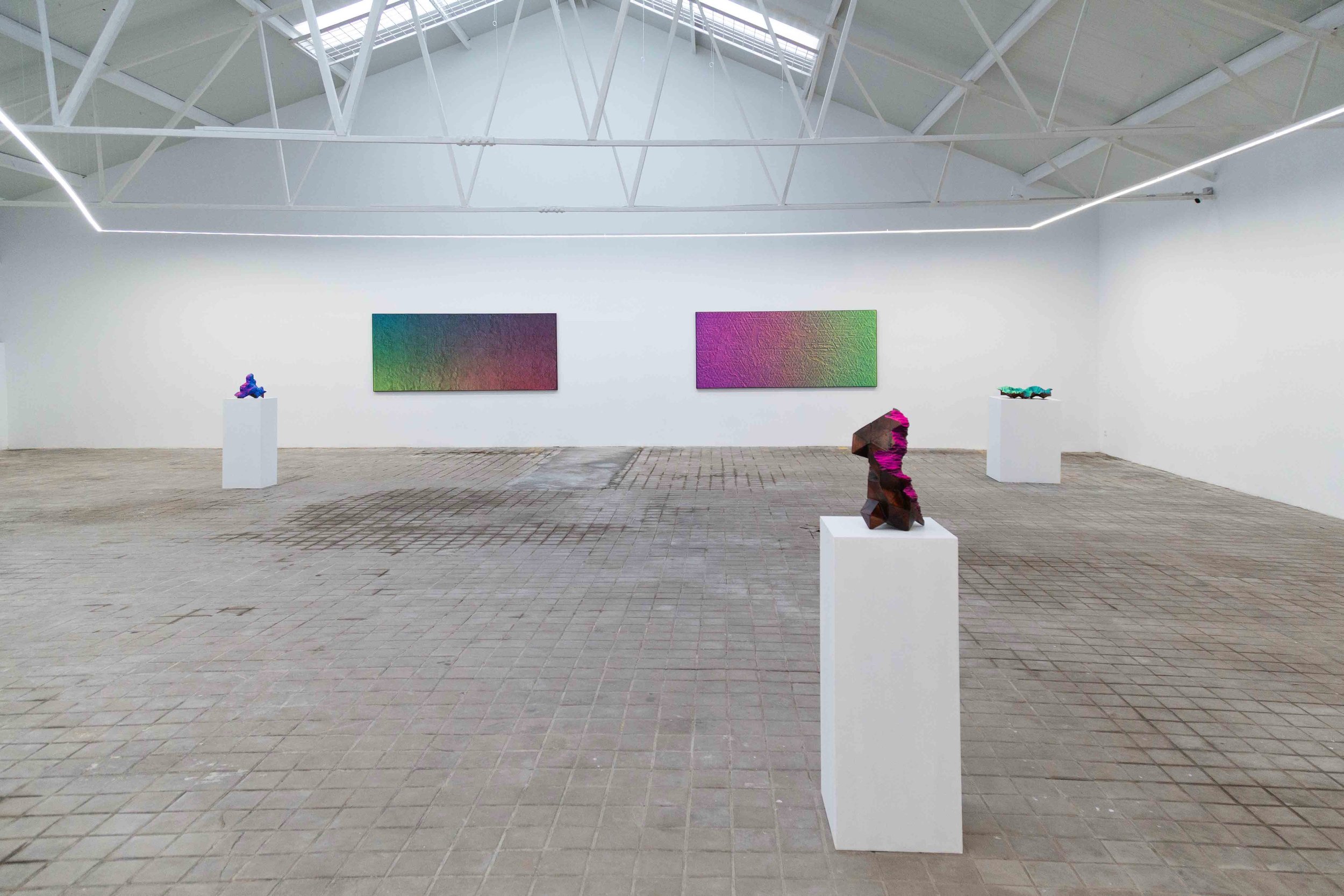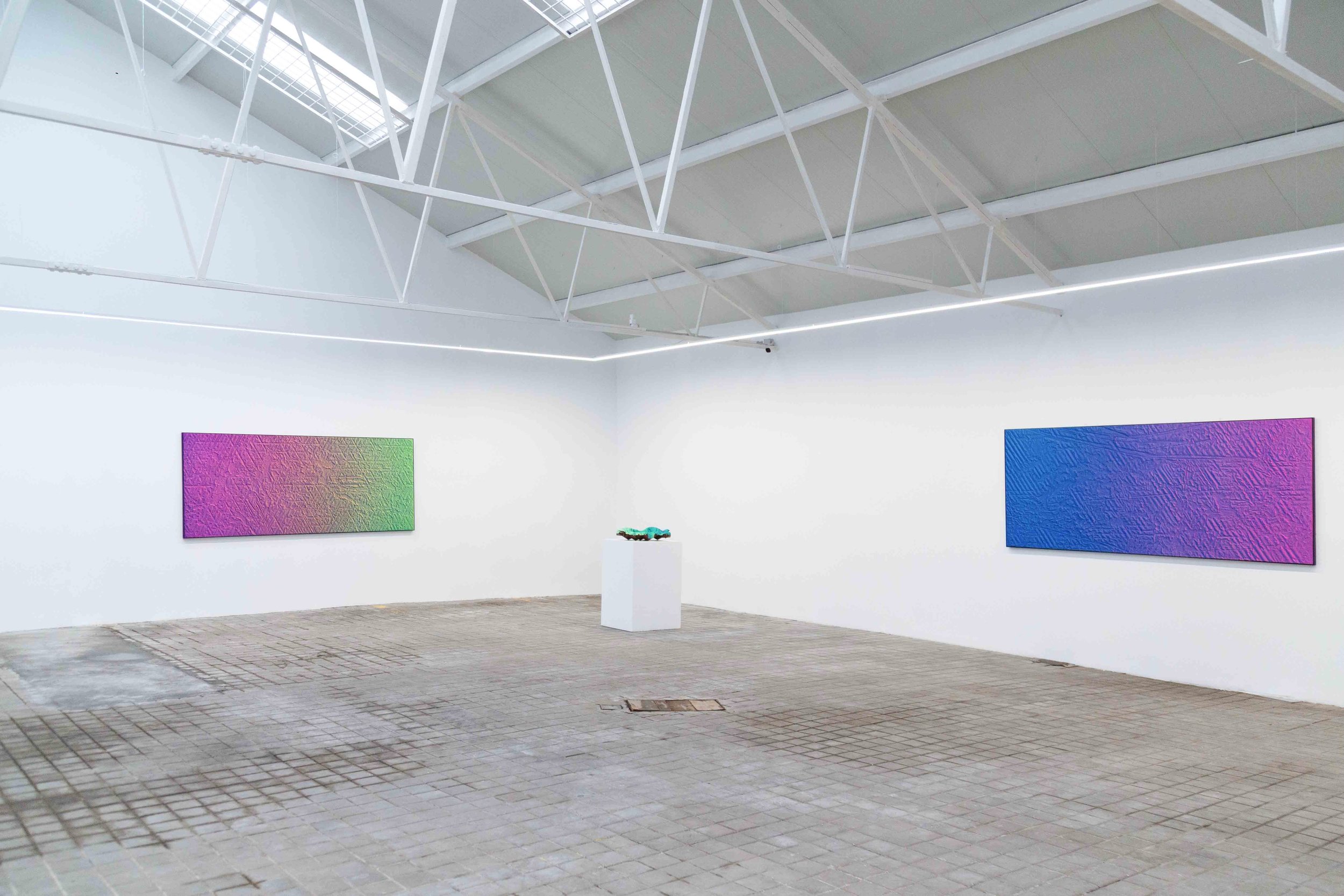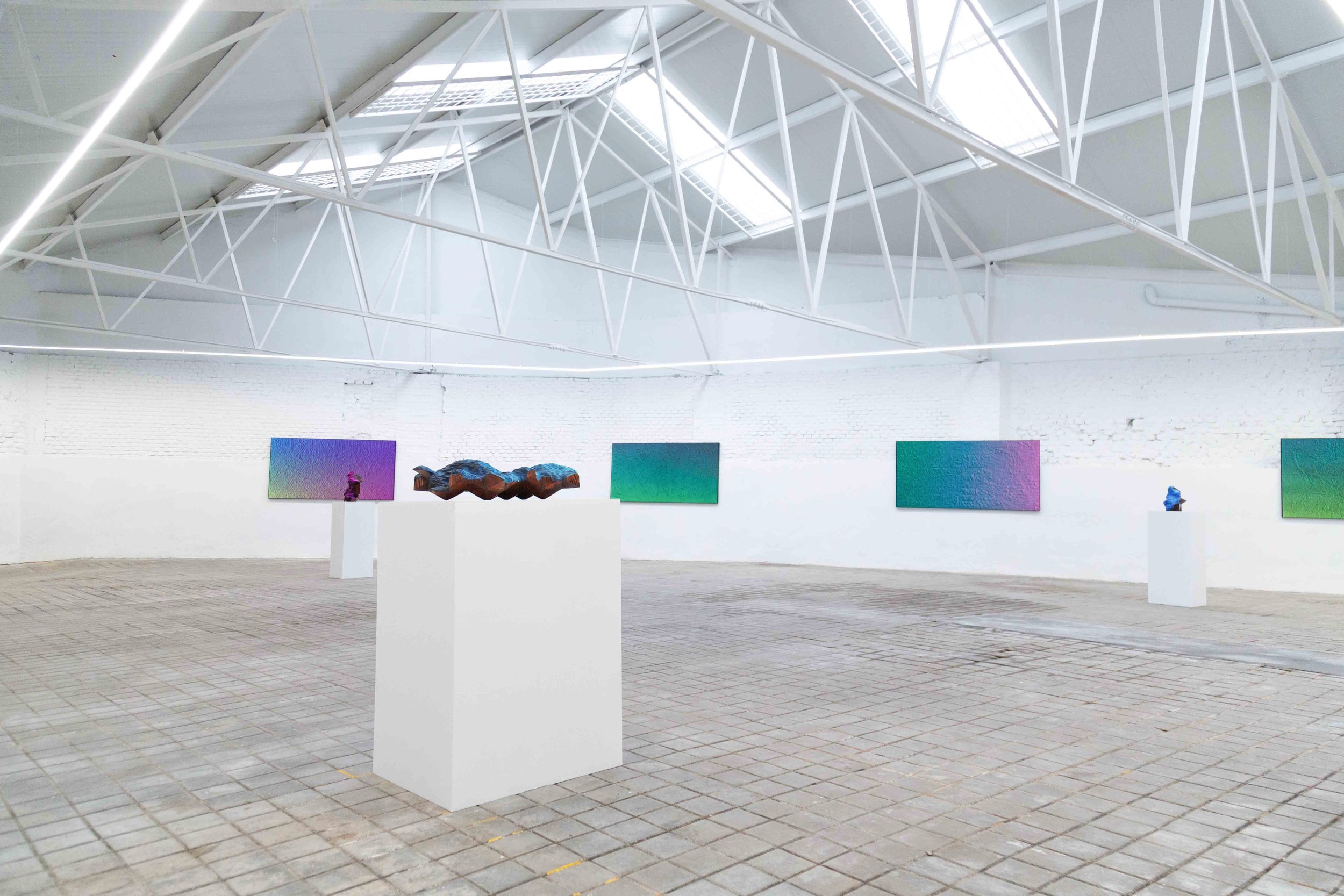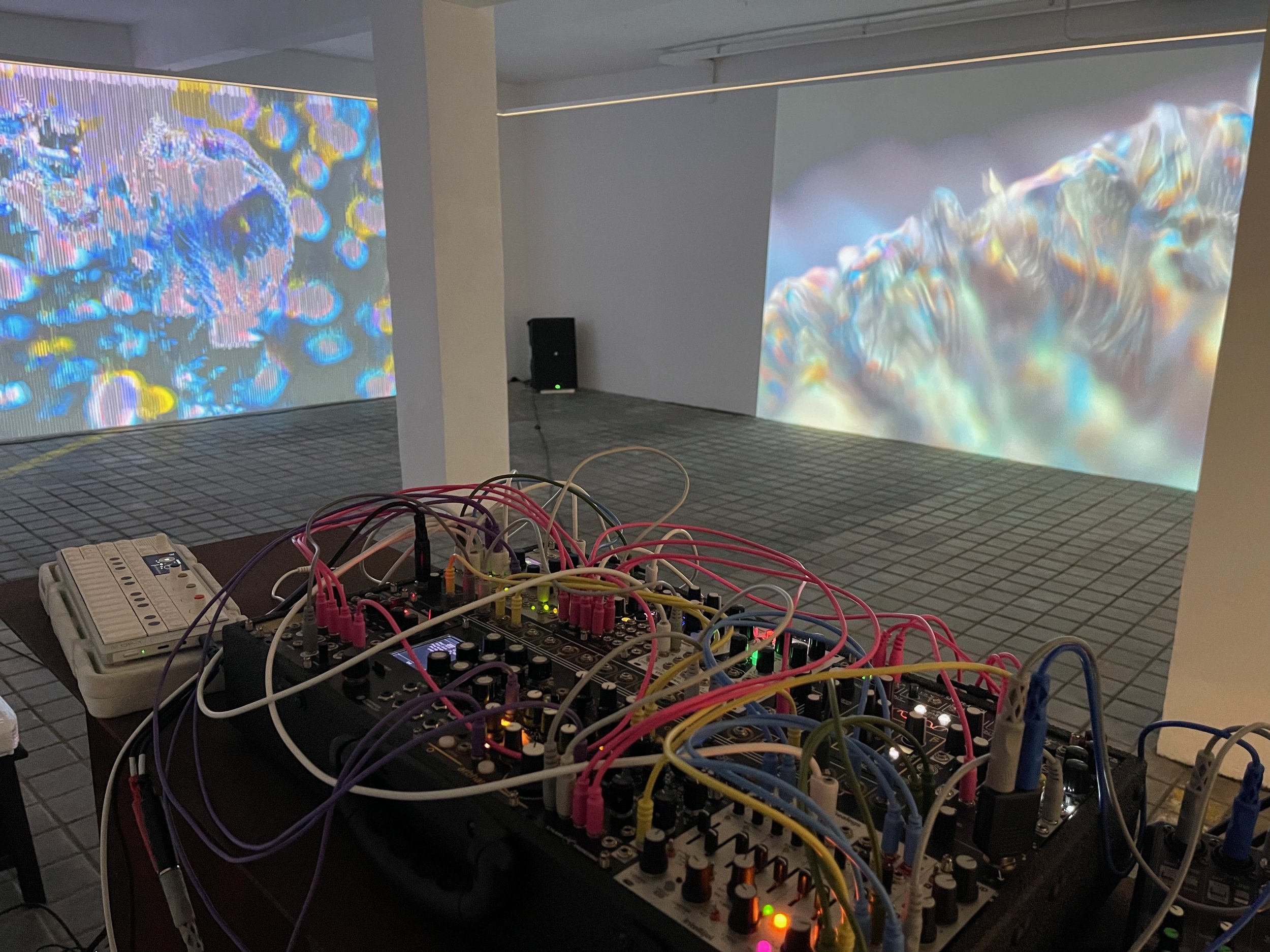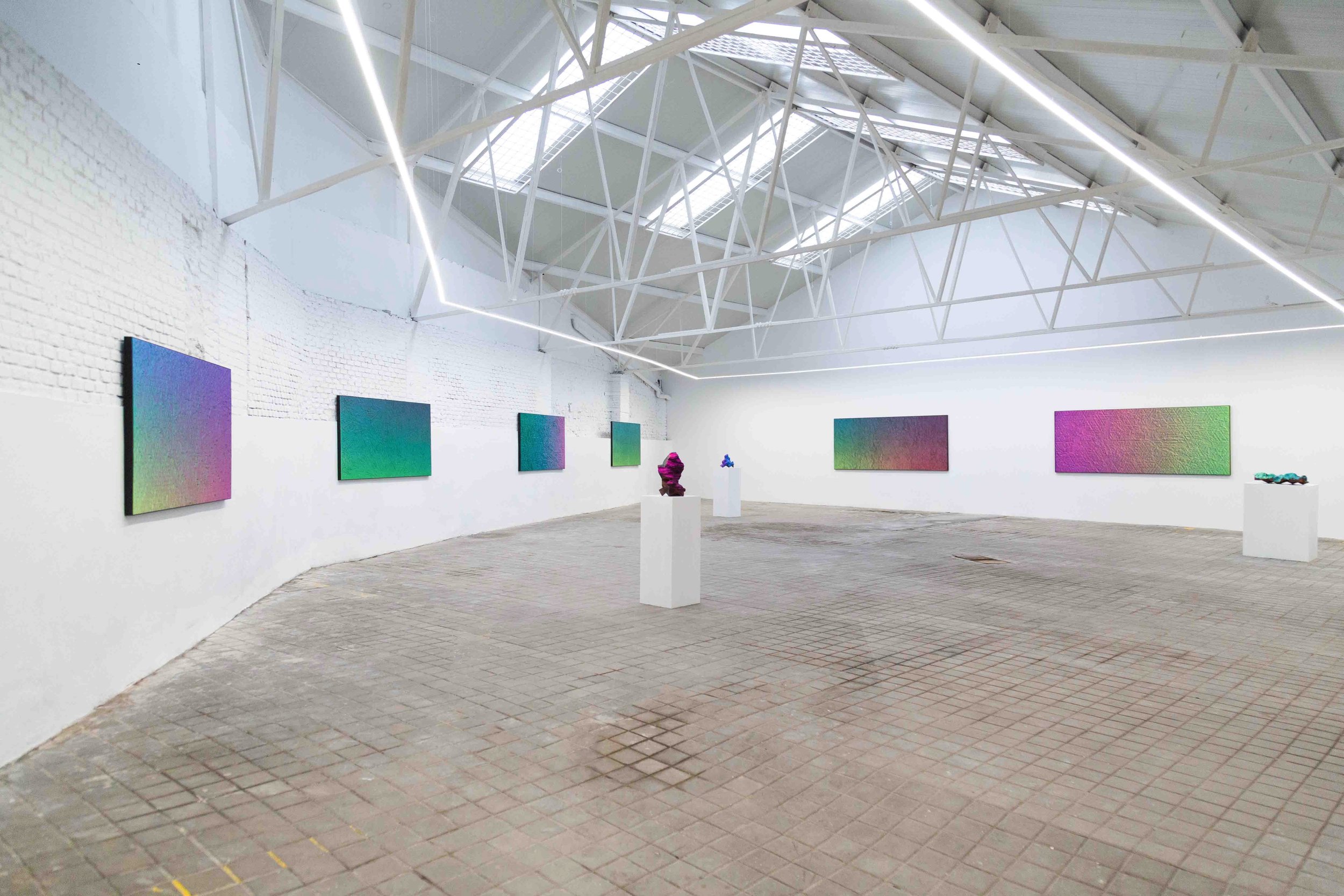
Madrid, 2025
Between Here and Now
Marc Bibiloni, Madrid, March 22 - April 11
Curated by Sofía Moisés Pizá
Vestiges of a Digital Archive
In a time that no longer remembers the glow of screens or the logic of algorithms, traces of a digital era emerge as silent remnants of a distant past. Technology—once an ephemeral system that defined everything—has collapsed, dissolved in the fragility of its own immateriality. Humanity’s memory is no longer stored on servers; only fragments remain from a time when reality and virtuality blurred together until they became indistinguishable.
In this dystopian future, Between Here and Now is not only the title of this exhibition but also the description of its own fate. The works become traces of those forms that found permanence in matter, proof that there was once a time and place where images were the fleeting gestures of human beings.
And though it may not be entirely true, let us imagine today, here and now, that the only possible memory is the one that persists in material form—on the surface of these paintings and sculptures—just like the earliest artworks that resisted the passage of time on stone.
In the work of Michael Staniak (Melbourne, 1982), a geological testimony to the language of a hyperconnected past, the line between the digital and the physical is blurred, generating an in-between space where perception is constantly challenged and the effects of technology on artistic creation are explored. Through material and conceptual research, Staniak questions the way we experience images in a world saturated with screens and defined by technological immediacy. In Between Here and Now, his work occupies this threshold, exploring the tension between the ephemeral and the tangible, the virtual and the real.
Since moving away from figurative painting years ago, Staniak has evolved towards a practice that problematizes the representation of digital phenomena. His shift toward abstraction reflects the increasing difficulty of capturing these phenomena through conventional pictorial means. In this process, he abandons the symbol of the pixel—once an emblem of the digital, now a retro-futuristic relic—to delve into the materiality of painting and sculpture. In an environment increasingly mediated by immaterial technologies, Staniak reinforces the physical presence of his works through traditional materials such as bronze and wood, anchoring his practice in the tension between the transient and the enduring.
A fundamental axis of his work is the duality between the analog and the digital. His paintings, with their gradients of vibrant colors, initially appear flat when seen in person, evoking the aesthetics of computer-generated images. However, upon closer examination—or even when viewed on a screen—unexpected textures and reliefs emerge, the result of manual processes that contrast with the algorithmic perfection to which we have become increasingly accustomed. This play of perception exposes the limitations of digital reproduction and reclaims the direct encounter with the artwork. At a time when images are constantly compressed, edited, and consumed through digital interfaces, Staniak invites us to reconsider the value of the tangible and the handcrafted, immersing us in a game between what seems to be and what truly is, challenging our dwindling capacity for attention.
In this exhibition, Staniak presents seven horizontal-format paintings, a significant shift in his production. This compositional decision establishes a dialogue with the visual language of cinema and the panoramic experience of perception, deliberately distancing itself from the vertical proportions associated with digital devices. His relationship with landscape—particularly meaningful following his residency on Fogo Island in 2018—manifests not only in composition but also in his interest in the materiality of the natural environment and its connection to the elements that enable digital technology. It is fascinating to observe the physical imprint present in digital media and, conversely, how the textured surfaces of his works evoke eroded landscapes, archaeological vestiges of a digital archive frozen in time on a physical substrate.
Alongside these paintings, Staniak exhibits three wooden sculptures exploring geometric forms such as triangles and hexagons, referencing fundamental principles of quantum physics and simulation theory. These pieces reinforce his investigation into the nature of reality, the interplay between material and virtual realms, and the tension between the unique and the reproducible. In this sense, his work resonates with debates surrounding post-internet art, characterized by the dissolution of physical space into digital culture and a reflection on the circulation of images in the age of immediacy. Staniak’s practice aligns with broader discussions on technological evolution and its impact on artistic production, engaging with theorists such as Gene McHugh, Marisa Olson, and Boris Groys, among others.
In a present where artificial intelligence and quantum computing raise new questions about perception and creativity, his work stands as a testament to the persistence of human gesture and the importance of materiality in art. Through Between Here and Now, Staniak invites us to reflect on our relationship with technology and the nature of reality, inhabiting—for a fleeting moment—that liminal space between the immediate and the timeless, between surface and depth, between the digital archive and physical memory, between here and now.
Sofía Moisés Pizá
March 2025
